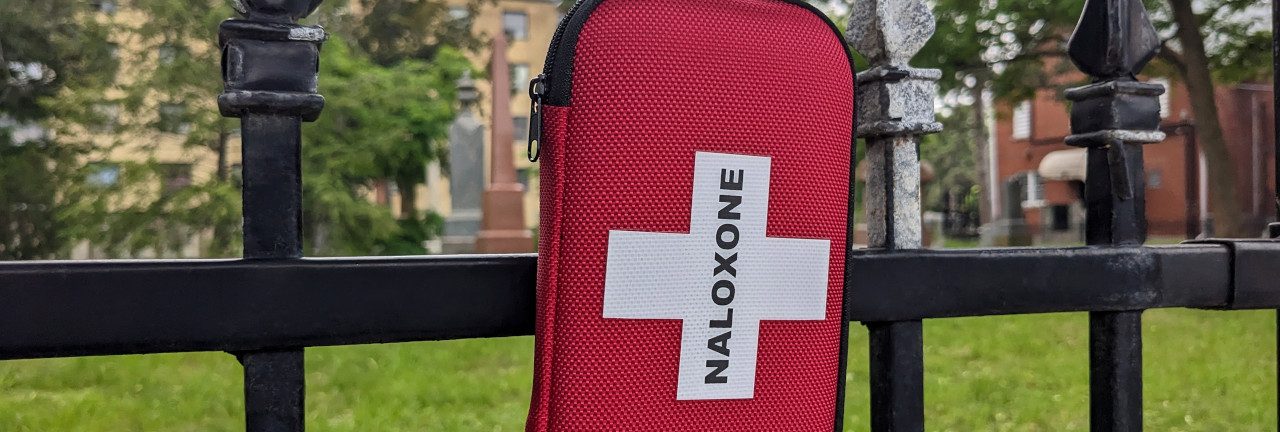Early statistics on overdoses in the United States suggest nearly a 29% increase from 2020 to 2021, further proving an ongoing problem.1 Harm reduction is a set of evidence-based tools and strategies aimed at decreasing the negative effects of drug and alcohol use. The goal of these strategies is to help people who use substances stay alive and as healthy as possible.2
In this article:
- What is Harm Reduction?
- The Importance of Harm Reduction
- What Are the Goals of Harm Reduction?
- Does Harm Reduction Encourage Drug Use?
- What Are Examples of Harm Reduction Services?
- Finding Addiction Treatment
What is Harm Reduction?
Currently, the United States is facing its most significant substance use and overdose epidemic, and harm reduction is a comprehensive approach to addressing this epidemic.1 Harm reduction services are typically more available and accessible to people than other treatment approaches. In comparison, harm reduction services emphasize humility and compassion.
Harm reduction approaches are designed to minimize the risks associated with substance use.2 The services provided with this approach can be critical if you are not yet ready for treatment. Harm reduction can help minimize risk but can also help engage you in safer and potentially recovery-oriented practices. For many, harm reduction services can be an influential initial first step in treatment.
Harm reduction services are composed of nonjudgmental care and compassion. These services can:1
- Connect you with education regarding overdoses
- Connect you to counseling
- Provide you a referral for the treatment of infectious diseases and substance use disorders
- Distribute overdose reversal medications for opioids (i.e., naloxone) and clean needles for drug injection
- Lessen the harms that are associated with drug use and behaviors that could increase the likelihood of obtaining an infectious disease
- Promote treatment and facilitate co-location of services for integrated care
- Reduce stigma associated with the use of substances and co-occurring disorders
- Inspire and promote hope and healing
The Importance of Harm Reduction
Not everyone with a substance use disorder will want or receive treatment; however, that does not mean that providers and agencies cannot help them.2 For many, abstinence may not be the goal, and it does not have to be. Services and techniques provided through a harm reduction approach can help you learn how to stop using in addition to how to use more safely to reduce your risk of injury, illness, and death.
Harm reduction can also be a stepping stone into treatment; many people find that when they are met where they’re at and not pushed or forced into treatment, they become open to it.2 This approach helps ensure that you are not turned away just because you are not interested in traditional treatment or abstinence.
What Are the Goals of Harm Reduction?
The main goal of harm reduction services is to meet you where you are at and on your own terms. Harm reduction can assist you with prevention, treatment, and connection to further recovery-based interventions.1,3 These types of services have a significant role in preventing drug-related deaths and providing and offering access to:1
- Healthcare
- Social services
- Treatment
Goals of harm reduction also include generally decreasing the rate of:1
- Overdose fatalities
- Infections due to unsterile drug injection
- Chronic diseases such as HIV and hepatitis C
Many harm reduction services’ goals are focused on prevention, as well as:1
- Increasing knowledge about sexual health and safe sex
- Reducing the spread of infectious diseases, especially sexually transmitted and blood-borne infections
- Increasing knowledge about how to use substances safer
- Reducing deaths associated with overdoses
- Reducing early deaths related to those who use substances and alcohol
- Improving your physical health
- Reducing the stigma surrounding substance use and substance use disorders
- Increasing access to health services and support programs
Funding for Harm Reduction
Harm reduction services are continually monitored and evaluated. The Substance Abuse and Mental Health Service Administration (SAMHSA) is one agency that provides funding via grants to agencies and/or individuals who apply and meet their requirements.1 The American Rescue Plan and SAMHSA are attempting to increase access to community-based harm reduction services. Funding will be provided to approved community-based organizations in their attempt to prevent overdose death and reduce health risks associated with substance use.
Funding will be awarded to providers who must use the funds to create new or support existing services that may include, but are not limited to:1
- Case management
- Medical services
- Overdose prevention kits
- Peer work engagement
- Prevention education about synthetic opioids and other substances
- Providing safe-sex kits
- Providing sterile syringes
- Referrals to treatment
Additionally, these grants stress the importance of warm handoffs. Warm handoffs refer to a process where you meet one provider who will walk you through the next steps and connect you with another provider. This is typically done in person, whereby the first provider physically introduces you to the second. The warm handoff process is designed to ensure continuity of care as well as increase and maintain engagement.
Lastly, the grants will be awarded to those community-based organizations that can ensure their services are trauma-informed. Trauma-informed services acknowledge there are many aspects to each individual, and many individuals have experienced trauma. These services attempt to reduce the possibility of re-traumatizing individuals and integrating trauma research into their practices, policies, and procedures. It is also common for trauma-informed organizations to have a good understanding of what trauma is and how it presents itself. Community-based organizations focused on harm reduction will especially have a deep understanding of trauma and within the specific context of substance use disorders.
Legislation
Due to the continued increase of rates of addiction and overdoses, and early data suggesting that the COVID-19 exacerbated this increase, there needs to be an effective approach to prevention, treatment, and recovery of these disorders.4 Therefore, President Biden signed into law the American Rescue Plan, which allows the Substance Abuse and Mental Health Service Administration to provide grants to expand behavioral health services.
The priorities of the American Rescue Plan are to ensure evidence-based approaches are utilized to help save lives, harm reduction efforts being a significant piece of this plan. Additional priorities include:
- Advancing racial equity issues in drug policies
- Advancing recovery-readiness in workplaces
- Enhancing evidence-based harm reduction efforts
- Expanding access to treatment founded on evidence-based practices
- Expanding the addiction workforce
- Expanding access to recovery support services
- Supporting evidence-based prevention efforts to reduce substance use in youths
Does Harm Reduction Encourage Drug Use?
Harm reduction does not encourage drug use—rather, it is focused on decreasing the negative effects and reducing the stigma related to substance use and overdose.3 Many harm reduction services will be provided alongside abstinence-based methods.5 Combining services can enhance engagement and help keep people in treatment.
These interventions can be especially helpful for those individuals who are ambivalent about treatment.2
What Are Examples of Harm Reduction Services?
Harm reduction services can include:1
- Access to HIV and hepatitis testing and treatment
- Case managers
- Counseling
- Comprehensive sex education
- Fentanyl test strips
- Medical care
- Naloxone (Narcan) and overdose kits
- Peer support specialists
- Safe smoking supplies
- Sterile syringes and other injection equipment
- Syringe service programs or needle exchange programs
- The use of motivational interviewing
- Use of vaccines, social distancing, and masks
- Drug testing tents at music festivals
Benefits of These Services
Research has shown that providing educational material and referrals to needle and syringe programs makes people less likely to share and reuse needles.2 These acts alone reduce their risk of transmitting diseases such as HIV and hepatitis C. Providing education on how to effectively wash their hands, care for wounds, and other general good hygiene practices, in addition to how to properly inject substances into their veins, reduce the risk of infection and medical complications. Education will also likely cover when to seek medical care and antibiotics and when to continue to care for themselves.
Furthermore, distributing and educating on the use of naloxone (Narcan) can help prevent fatal opioid overdoses.2 Naloxone is a medication that reverses the life-threatening effects of opioids and can help those in an active overdose return to normal breathing.2,6 Every state has a naloxone access law allowing you to buy it through the pharmacy, although every state differs. Learn how to get Narcan in your state.
Fentanyl is a potent opioid that can be found alone or mixed with other opioids and can cause life-threatening consequences, even in relatively low doses. Many dealers cut their drugs with fentanyl to increase potency and increase their profits, unbeknownst to those buying these drugs. Recently, fentanyl test strips have been developed to detect the presence of fentanyl in various drugs. The use of the strips can inform you of its inclusion in their drug prior to consumption, reducing potential fentanyl overdoses.
Moreover, if you inject substances, you are at a higher risk of developing blood-borne diseases and HIV. By providing information on how to practice more safely, this risk is reduced. It is also common for individuals who use substances to be engaged in high-risk sexual behaviors. These behaviors can include multiple sex partners and unprotected sex. By providing access to prophylactics and general safe sex practice education, a reduction in sexually transmitted infections can be seen.2
Finding Addiction Treatment
Harm reduction can help mitigate some of the negative effects of substance misuse on a person’s physical and mental health; however, quitting drug and alcohol use is the best way to reduce and prevent further consequences. If you’re ready to pursue addiction treatment, there is a program out there for you. Get help today, call
800-914-7089
(Sponsored)
. Help is available.
Resources
- Substance Abuse Mental Health Administration. (2022). Harm reduction.
- Substance Abuse Mental Health Administration. (2021). Treatment for stimulant use disorders.
- United States Department of Health and Human Services (n.d.). Harm reduction.
- Whitehouse.gov. (2021). The Biden-Harris Administration’s Statement of Drug Police Priorities for Year One.
- Substance Abuse and Mental Health Services Administration. (2020). Substance use disorder treatment for people with co-occurring disorders.
- National Institute on Drug Abuse. (2021) Naloxone for opioid overdose: Life-saving science.

